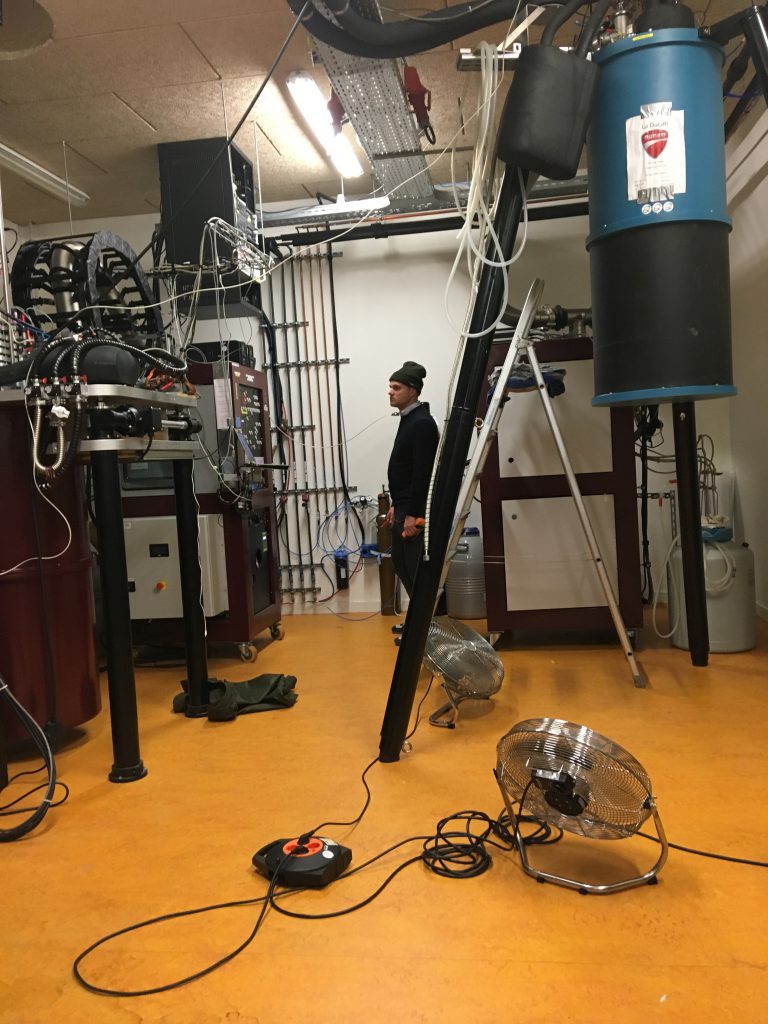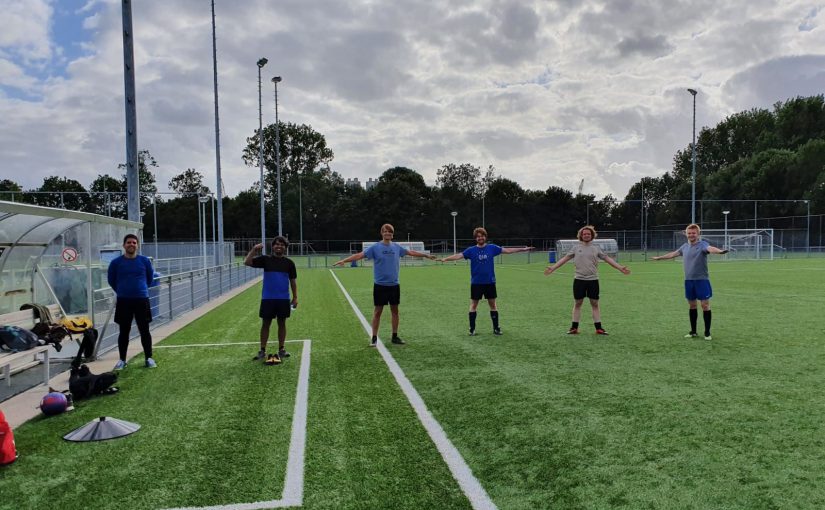11.09.2020by Niels Bultink
A nightly physics adventure

” WA R N I N G : 5 FAU LT S F O U N D ! “
by Niels Bultink
It was around 1:00 AM on a cold winter night in 2019 when I stepped out of a bar in the historic center of Delft. Time to go home, after celebrating Suzanne van Dam’s successful PhD defense. Evenings like these remind me why science is such a great endeavour. People might be working long hours to reach only tiny steps. But there is a team of people around you that understands the struggle. And, when those tiny steps lead to a big one, or occasionally even a breakthrough, celebration comes with all sorts of weird traditions. In short, it was an evening with a warm QuTech family feeling. For me personally it was also a nice change of scenery. Over the months prior, I had been working intensely on the final experiment of this thesis. In particular this week, I was finetuning day-in day-out to hunt for data sets that were fit for publication. Although the efforts of many had been finally coming together for quite some time: from design, to fabrication, to the integration of the setup; it is this final stage of an experiment that can make or break years of struggle for the whole team.
In complete ignorance of what was about to happen, I drew my phone to see if I had missed anything. Upon lighting the screen, my full attention was drawn: “9 unread messages from La Maserati”, the name of the dilution refrigerator I was using. This is the gigantic and complex system that cools down the quantum chip close to absolute zero and thereby enables the control of quantum phenomena. For a second, I comforted myself, as likely the messages were caused by a failure in the pressure monitoring system. This was a routinely experienced false alarm from La Maserati that leads to a burst of automatically-generated warnings. It mostly occurred at the least convenient time to manually reset the monitoring. Opening one of the messages, however showed that the situation was more severe.
WARNING: 5 FAULTS FOUND!
Injection pressure is unsafe!
OVC pressure is unsafe!
Still pressure is unsafely high!
Still is running hot!
3K Plate is running hot!
First responder = Niels B
T_3K = 19095 mK.
T_Still = 1170 mK.
T_MClo = 327.6 mK.
P_5 = 1601 mBar.
P_IVC = 0.000564 mBar.
P_OVC = 0.006134 mBar.
Fri, Feb 01, 2019 9:37:00 PM, La Maserati
The untrained eye will note that the five warnings probably mean things are not great. The trained eye will note that each individual pressure and temperature reading is completely off. i.e. far beyond the point of getting things back on track. Reading this message thereby abruptly marked the end of the experimental work of this thesis, the part I liked most.
It was quite a shock, but no panic. Fortunately we were already sitting on high quality data. Soon, we needed to go into writing mode to push for publication anyway. It was however required to pay a direct visit to the lab to bring the system to a safe mode. It was a welcome surprise for my two travel companions, Anne-Marije and Jules, who were clearly craving a nightly adventure in the lab. After going through the standard procedures: switching off the control electronics and recovering the precious helium-3 from the internals, it was my goal to leave the fridge on its way back down towards three Kelvin. This intermediate temperature would allow us going back to base temperature (0.02 Kelvin) during the next day. However, after a few attempts, I had to conclude that something blocked the fridge from lowering its temperature again. I even tried to call my PhD advisor, but the calls were unanswered. What would one expect at this time? It was far passed 3:00 AM and although the pressure in the fridge had lowered, the pressure on my relationship was clearly rising; time to drive home to Rotterdam. Surely, the situation would be clearer in the morning, after some rest.

Then, when stepping out of the faculty, the night took another unexpected turn. Looking from the parking space outside, we noticed a dark figure was walking down halfway the staircase. We asked ourselves: “Who in earth would still be in the building at this point?” It was not easy to tell as the mysterious figure was obscured by the many QuTech logos that covered the window (aka ‘het douchegordijn’). Anxiously, we awaited the person to arrive. And then, the one we had all been waiting for entered the stage. With the door wide open and a loud “TADA, here am I!”, my PhD advisor claimed his spot. A strangely exultant appearance for this time of the day. It turned out he was so relieved to see us, because we could save him from a sixteen-kilometer bike ride. This was his daily commute to Rotterdam, for which he had been charging with a power nap in his office, after Suzannes’ party.
After learning the details of our nightly adventure, we went back in together to take another look at the fridge. Rather quickly, we narrowed down the reason why the fridge would not return to three Kelvin. It was the same reason that made the system unstable in the first place: a small but sudden rise in pressure in the outer vacuum chamber. This had created a thermal bridge between the hot room and the cold inner workings. The root cause for this sudden burst of gas remains a mystery until today. But what I did learn, is that I will never forget this night. Everything came together that makes science so engaging: the pleasure of finding things out, the excitement of running an experiment that pushes the edge of what is possible, but mostly, the family feeling that binds together those who share this passion.
[1] This story has been published as the prologue of Niels’ thesis: C.C. Bultink, “Protecting quantum entanglement by repetitive measurement“, ISBN 978-90-8593-449-3 (2020)
About the author
 Niels has been performing his PhD research with great pleasure and an occasional sleepless night. He loves running a marathon (experiment) and is fascinated with controlling nature at its most fundamental level. Niels is convinced that the next monolith (2001: a space Odyssee) will appear on earth when quantum computers reach maturity. He was secretly hoping this to happen during the experiment that he was running above. He will continue the quest after a good night of sleep.
Niels has been performing his PhD research with great pleasure and an occasional sleepless night. He loves running a marathon (experiment) and is fascinated with controlling nature at its most fundamental level. Niels is convinced that the next monolith (2001: a space Odyssee) will appear on earth when quantum computers reach maturity. He was secretly hoping this to happen during the experiment that he was running above. He will continue the quest after a good night of sleep.
(Foto credit: Marieke de Lorijn)
Cover picture: the star Betelgeuse in December 2019. Picture made using the Very Large Telescope of the European Southern Observatory (ESO/M. Montargès et al.).

